Author/Illustrator: Lynne Rae Perkins
Publisher and Year: Greenwillow Books, 2002
Number of Pages: 30
Genre: Realistic Fiction
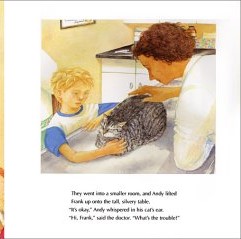 A young girl breaks her arm and it isn’t until she sees that it gets better, that she starts to feel better. As time passes, the young girl gets older and has a son. When her son’s cat breaks his leg, she reassures them both that it’ll get better.
A young girl breaks her arm and it isn’t until she sees that it gets better, that she starts to feel better. As time passes, the young girl gets older and has a son. When her son’s cat breaks his leg, she reassures them both that it’ll get better.
This text could work well as a mirror for children who can identify with Frank. At a young age, a child’s best friend is typically their pet. There may be children who feel for Frank and his cat because they love their pet in the same way. Some children also look to pets for direction as to how to react to a situation. For example, when Frank sees that his cat is depressed about breaking his leg, he also gets depressed. When the cat starts to feel better emotionally about the situation, Frank follows. The only characters who appear in the story are Frank’s family, who are White. However, when Frank’s mom breaks her arm and the town welcomes her home, there don’t appear to be any non-White neighbors. There could be more diversity in this book. Also, typical of gender roles, the woman is a nurse and the male is the doctor.
Perceptually, the text adds to the images. The images are dependent on the text, as the illustrations are very basic so a reader could not take much from them alone. Structurally, many of the images in the beginning are in, what appear to be, faded bubbles. The beginning of the story is filled with memories of when Frank’s mom was a child and broke her arm, so the faded pictures may just be her faded memories. When the story comes back into the present, the images are no longer in bubbles. One picture of the cat is a real picture, as parts of the story are based on true events. Ideologically, this story brings to life the true relationship of a child and their pet. The book never mentions that Frank’s mother felt bad for having the cast because she was made fun of, she just felt that it inconvenienced her. In a way, that sheds light on the situation.

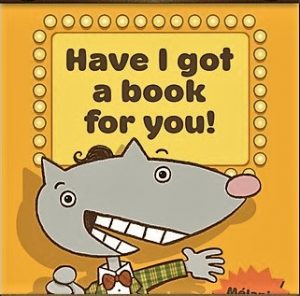
 Salesman Mr. Al Foxword claims that he can sell anyone anything, even the book that is being read. Al isn’t very convincing, but by the end of the book, the reader still feels like they have to buy the book.
Salesman Mr. Al Foxword claims that he can sell anyone anything, even the book that is being read. Al isn’t very convincing, but by the end of the book, the reader still feels like they have to buy the book.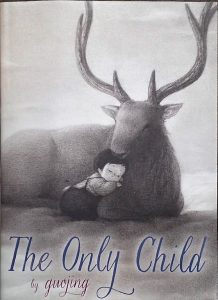
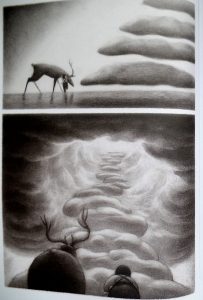 A lonely, only child runs away from home and finds a mysterious stag that takes her to a magical world. In this world, she feels loved and eventually misses home. Guojing takes us through the young girl’s journey back home to her family.
A lonely, only child runs away from home and finds a mysterious stag that takes her to a magical world. In this world, she feels loved and eventually misses home. Guojing takes us through the young girl’s journey back home to her family.
 In March: Book One John Lewis tells about the struggle he has gone through and witnessed since the beginning days of segregation. He highlights the highs and lows of the Civil Rights Movement, and how much influence he had in the process.
In March: Book One John Lewis tells about the struggle he has gone through and witnessed since the beginning days of segregation. He highlights the highs and lows of the Civil Rights Movement, and how much influence he had in the process.
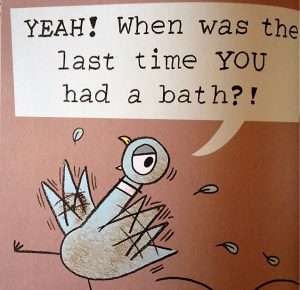 This dirty pigeon uses sarcasm and reverse psychology to get out of taking a bath. When his tactics don’t work and he is forced to take a bath, he realizes that baths aren’t so bad after all.
This dirty pigeon uses sarcasm and reverse psychology to get out of taking a bath. When his tactics don’t work and he is forced to take a bath, he realizes that baths aren’t so bad after all.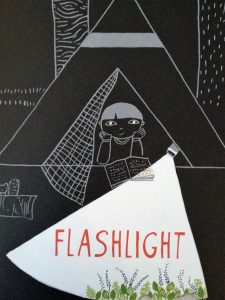
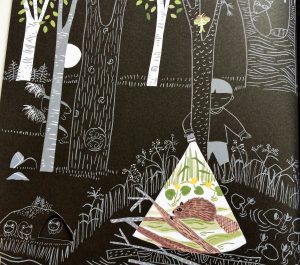 Flashlight is about a young boy who explores the mysterious world outside of his tent. What other way to experience nature than with a flashlight? Like a flashlight, this book helps us experience the beauties of nighttime nature.
Flashlight is about a young boy who explores the mysterious world outside of his tent. What other way to experience nature than with a flashlight? Like a flashlight, this book helps us experience the beauties of nighttime nature.![IMG_9670 [2578141]](https://blogs.iwu.edu/lrbmt2016/files/2016/05/IMG_9670-2578141-218x300.jpg)
![IMG_9671 [2578142]](https://blogs.iwu.edu/lrbmt2016/files/2016/05/IMG_9671-2578142-188x300.jpg) When an unwanted ghost boy, Leo, is “evicted” from his ghost home, he is forced to live on the streets. It isn’t until he meets a young, believing girl that he finally feels accepted and seen.
When an unwanted ghost boy, Leo, is “evicted” from his ghost home, he is forced to live on the streets. It isn’t until he meets a young, believing girl that he finally feels accepted and seen.![IMG_9673 [2578143]](https://blogs.iwu.edu/lrbmt2016/files/2016/05/IMG_9673-2578143-197x300.jpg)
![IMG_9675 [2578144]](https://blogs.iwu.edu/lrbmt2016/files/2016/05/IMG_9675-2578144-197x300.jpg) A rabbit is skeptical about what his new otter neighbors will be like. He is told to treat them as he would want them to treat him. After realizing how he’d like to be treated, he sees that maybe his new neighbors won’t be so bad after all.
A rabbit is skeptical about what his new otter neighbors will be like. He is told to treat them as he would want them to treat him. After realizing how he’d like to be treated, he sees that maybe his new neighbors won’t be so bad after all.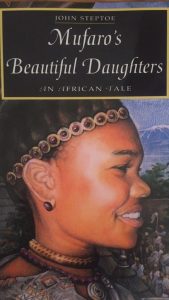
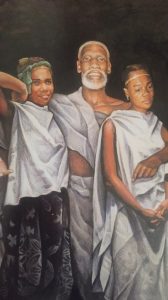
![IMG_9614 [405971]](https://blogs.iwu.edu/lrbmt2016/files/2016/05/IMG_9614-405971-300x220.jpg)
![IMG_9615 [405972]](https://blogs.iwu.edu/lrbmt2016/files/2016/05/IMG_9615-405972-300x175.jpg)